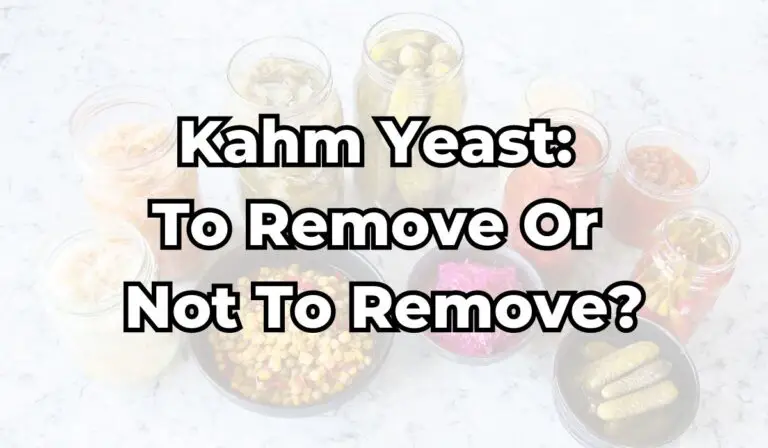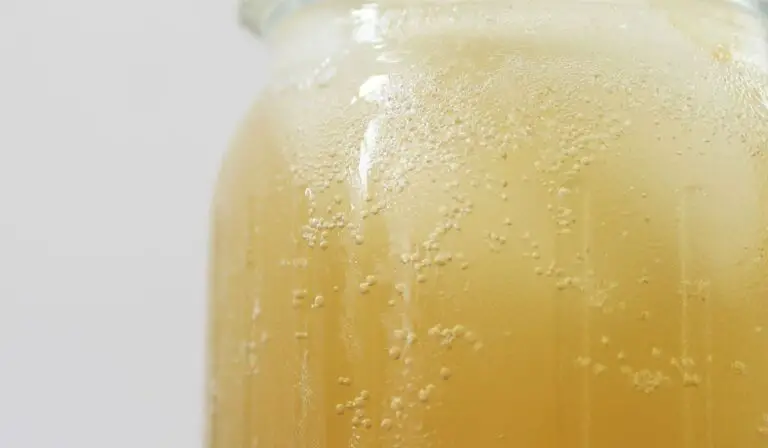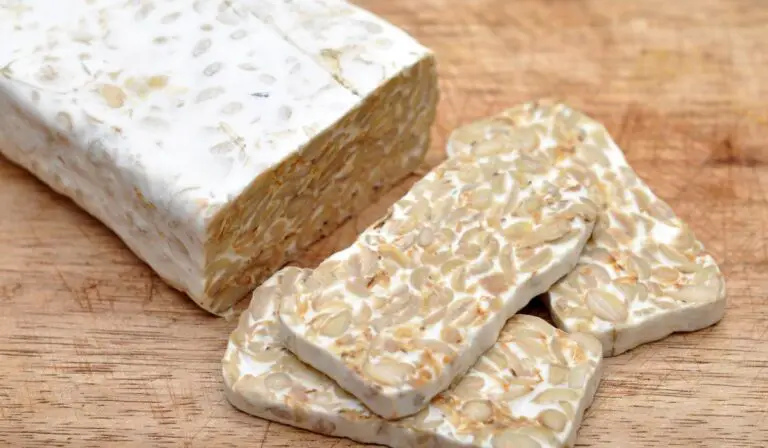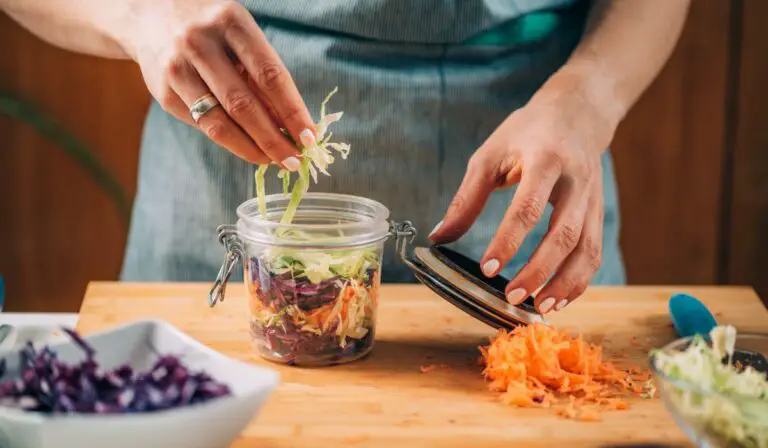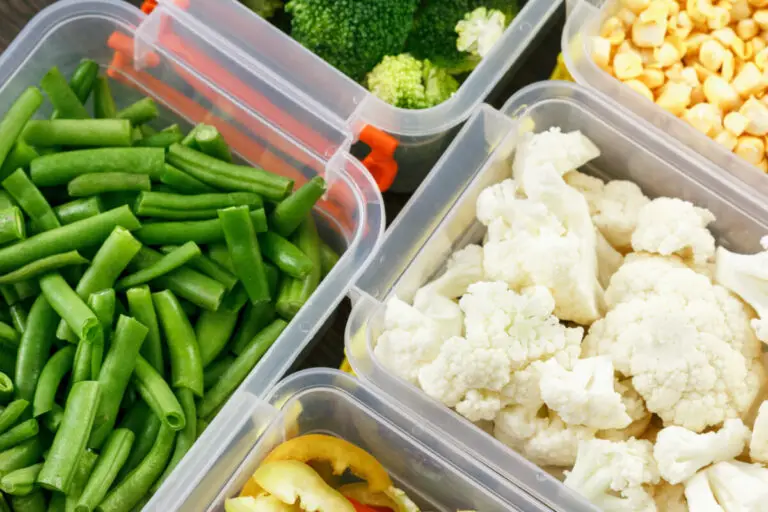My Fermented Vegetables Are Not Bubbling: What to Do?
Many people associate fermentation with bubbles and fizziness, and when seeing the jar with vegetables fermenting is not bubbling, they might think that it went wrong. If the vegetables you are trying to ferment are not bubbling, don’t worry! I’ll walk you through the steps to evaluate if this is a problem or not and how to fix it!
First things first, do bubbles mean fermentation? Can I have fermentation without bubbles? During fermentation, CO2 is produced, and these are the bubbles that we see. So, if there are bubbles, a reaction is happening, and CO2 is being released. However, the bubbles produced by the fermentation process can often be tiny or not get trapped in the jar, so unless you are watching the jar 24/7, you might not see them. That way, bubbles mean fermentation, but their absence does not mean the opposite. If your vegetables still have a pleasant smell and taste, you should not be worried.
Now that we know that your ferment’s lack of bubbles does not mean it is all going to waste, we can go deeper into the subject and teach you how to evaluate if your ferment is still healthy and how to use the bubbles to change the texture in your vegetables.

How to Know if Your Vegetables Are Good and Fermenting?
Bubbles are a sign of healthy fermentation, but as we saw before, they are not the only sign of it and we can easily miss it, depending on the conditions your ferment is at and the speed of the activity the vegetables being fermented. When evaluating the healthiness of fermentation, you can trust your senses. Smell, taste, and appearance will tell you all you want to know about fermentation.
Here is a guideline on how to evaluate using each of your senses.
Smell
You can trust your nose! It will be your best friend when evaluating a ferment. A good fermented vegetable smells pleasantly sour and vinegary. If your fermented vegetables have a pungent or rancid smell (like rotten food or “way too long in your fridge” broccoli), it has gone bad. It also should not smell like alcohol, and if it does, a different kind of fermentation has taken place.
If they smell like fresh vegetables still, maybe you are checking it too soon, and your vegetables haven’t started fermenting yet. So, if it has been only a few days, do not worry and let it be for a while. If it has been more time, it is worth checking if the conditions are appropriate for fermentation. You can read more about the topic in this article.
Sight
Firstly, look for the bubbles. As we already talked about, bubbles are a sign of fermentation. Sometimes the bubbles are small and might get stuck under the vegetables. A gentle but firm tap on the side of the jar should help them to be released. If you see the bubbles, that means fermentation is happening.
Secondly, look at the colour of the vegetables. During fermentation, colours tend to change. Your fermentation might be going south if you have two colours in the same vegetable. Like if one part is brown and the other part is the original colour the vegetable normally is, but just a bit duller.
Normally, this means that there was not enough salt and the brown part might be rotten. That being the case, take the vegetable out and give a sniff, your nose is going to tell you the answer. In doubt, I would throw it away and start again. Better safe than sorry. That is my approach, but some people would be ok with just removing the bad piece, so you can choose how to proceed.
Another visual red flag is mould. If the mould is on the vegetable being fermented or under the brine, throw everything away and start again. If the mould is on the top of the brine, opinions get divided. I prefer to throw away and restart, but that is me. In theory, everything under the brine should not be affected by the mould on top, so you can just scoop it out. So, again, it is up to you.
Touch/Texture
Texture will change as fermentation goes, normally leaving the vegetables less crunchy. That is ok and it is part of the process. The texture you don’t want is “slimy”. If there is a kind of goo coating your vegetables, you have a red flag.
Take a look at the table below for easy reference.
| Good | Bad | |
|---|---|---|
| Smell | Pleasantly sour and vinegary. | Pungent, rancid, rotten, alcoholic. |
| Sight | Bubbles; uniform change in colour. | Different colours in the same vegetable. Mouldy. |
| Touch | Less crunchy. | Slimy and gooey. |
My Ferments Haven’t Started Bubbling Yet! Does This Mean It Is Not Working?
Has the smell, flavour, and appearance changed? If you don’t have any of the signs described above nor the good or the bad ones, maybe your vegetables just haven’t started fermenting yet. Check back in a few days. You can try to move it to a warmer temperature if you want to speed up the process.
If you have visual and smell signs that your vegetables are fermenting, but there are no bubbles, do not worry. You probably didn’t see them. They might have been too small or been released too fast, not getting trapped inside the jar.
My Fermented Vegetables Were Bubbling, But Now They Stopped? What Should I Do?
Don’t worry! When the bubbles stop, the most active part of your fermentation is finished, and bacteria activity has slowed down. It does not mean they stopped or died, they are still working to make your vegetables delicious.
The best way to evaluate the fermented vegetable is to look for the same signs we described before and analyze them using the same process. Check on it periodically.
Also, taste your ferment! The taste will tell you if it is ready to be moved to the fridge or if it needs more time to get to that perfect funkiness.

How Bubbles Affect The Texture And Taste of My Fermented Vegetables?
Now that we know that we don’t need bubbles to have good, tasty, funky fermented vegetables, there is one more thing worth mentioning. Bubbles are not an indicator of fermentation, but they can change the texture of the ferments. The more bubbles trapped in the ferment, the more fizziness you will get in it. So, if you are worried that your vegetables are not bubbling because you would like them to have a fizzy texture, then there are two things that could help you to achieve your goal.
The first and most effective one is to put a lid on it (and burp it as you go). The lid will trap the CO2, making sure the bubbles stay inside and creating a fizzy texture. Again, there are not enough warnings: burp the jar if it is a really active fermentation like kimchi or giardiniera! If you are not going to be able to burp it, just use an airlock lid.
If you are using a lid, still have no bubbles and want to increase the fizziness, you can give a little push to the fermentation process. The environment can make the ferment more active, and, therefore, produce more bubbles. The easiest way to do so is to move the ferments to a warmer place.
Another option is to add a bit of sugar to it. The sugar will be consumed by the bacteria, making them happy and active, but don’t worry, the end product won’t be sweet. This technique is a little more advanced since you will need to keep an eye on the vegetables to make sure the fermentation is not too active.


